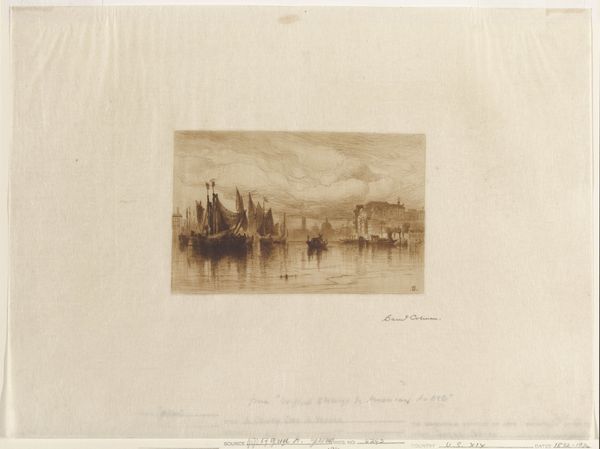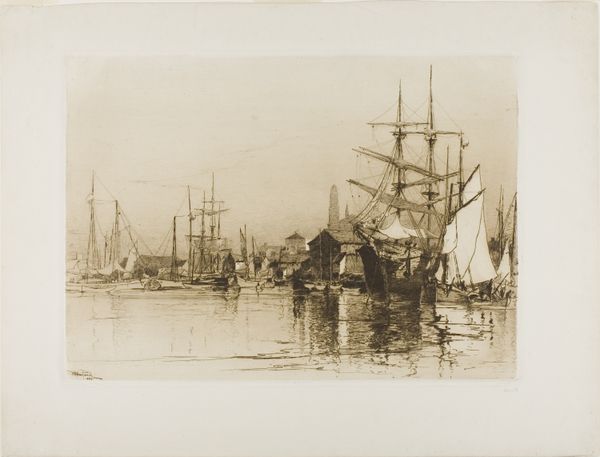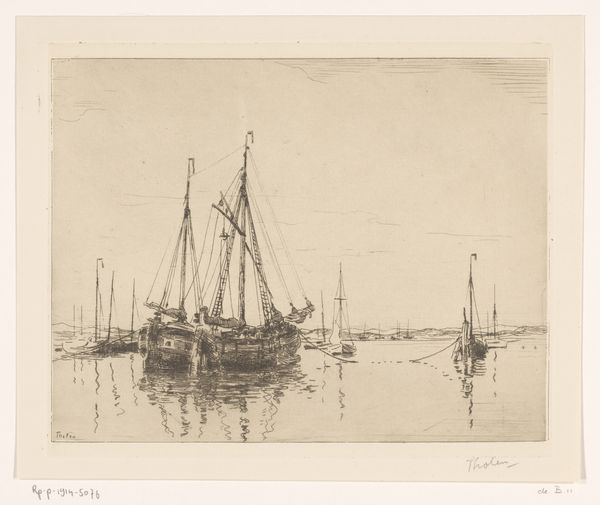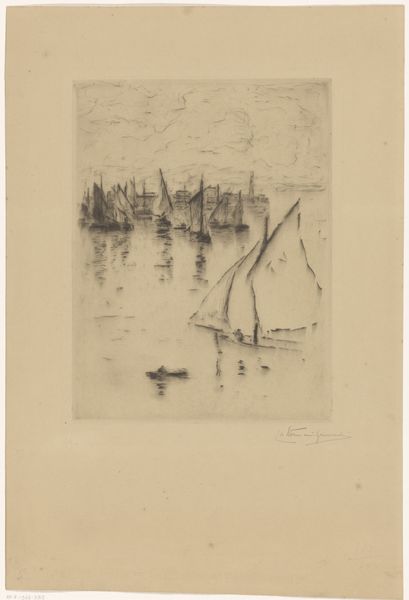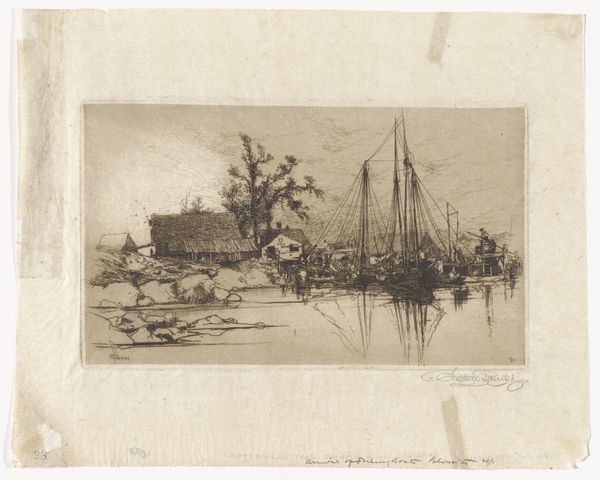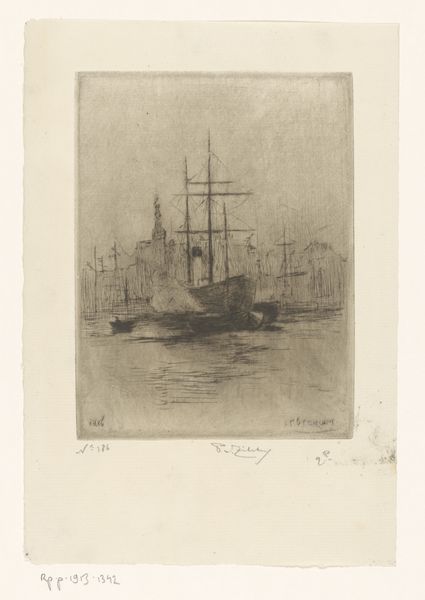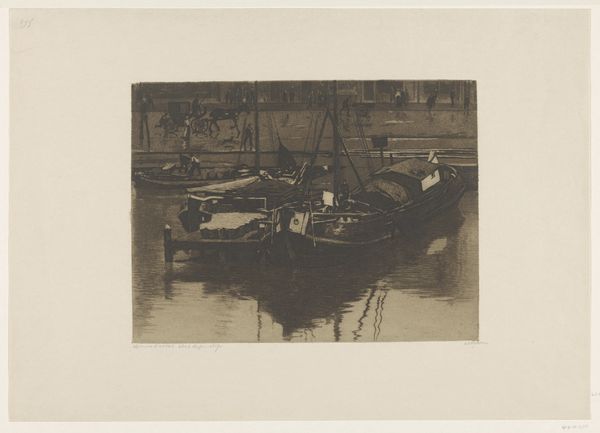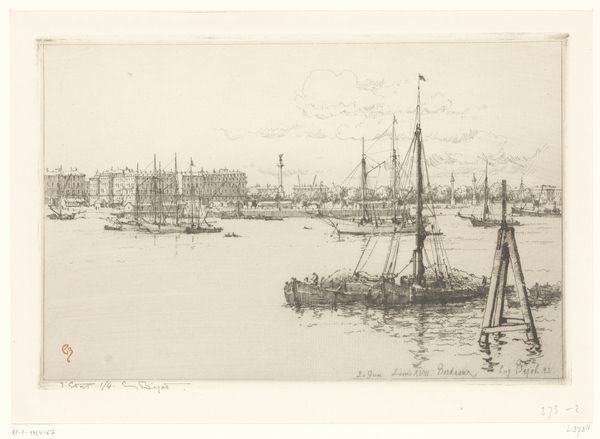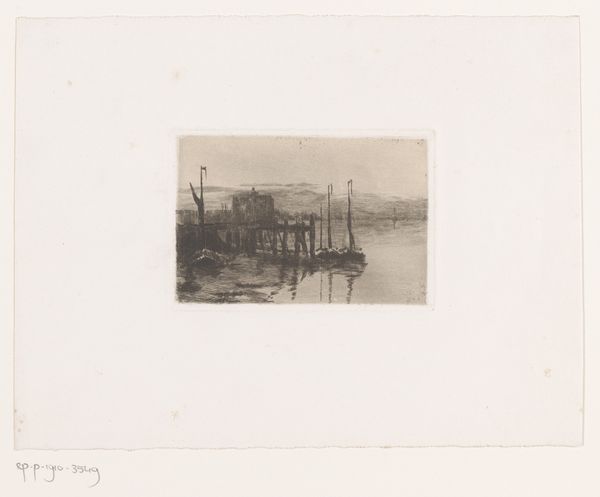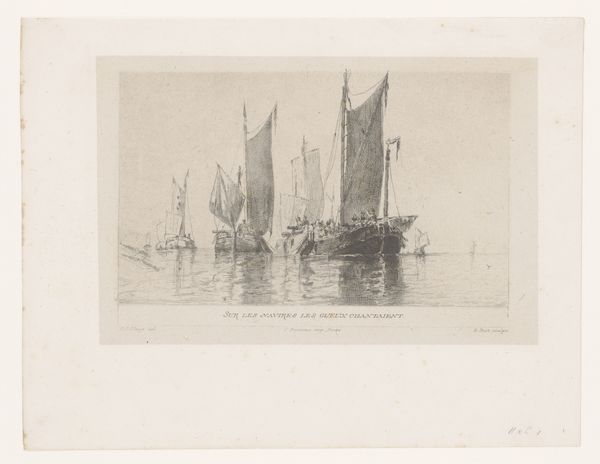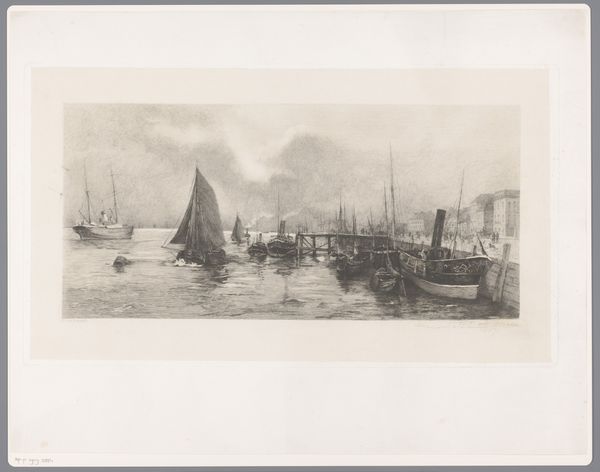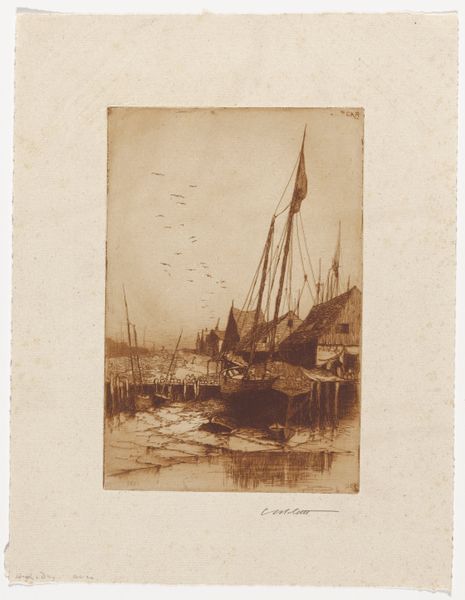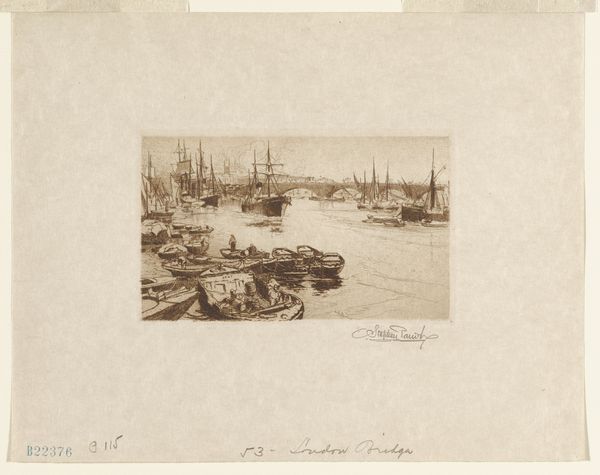
drawing, print, etching, paper
#
drawing
#
ink painting
# print
#
etching
#
landscape
#
paper
#
united-states
#
cityscape
Dimensions: 302 × 248 mm (plate); 296 × 241 mm (primary support); 443 × 351 mm (secondary support)
Copyright: Public Domain
Curator: Before us is Joseph Pennell's 1884 etching, "Below Chestnut Street Bridge, Philadelphia," currently residing at the Art Institute of Chicago. The piece employs ink on paper, depicting a bustling scene of maritime activity. Editor: The stillness is compelling. The reflections are like ghost ships hovering under a murky mirror. It feels like industry meeting quiet contemplation, perhaps the lull before the start of the working day. Curator: Pennell created this piece at a pivotal moment, amidst rising industrialization. Waterways teemed with commercial activity. The river, however, also symbolized a critical space for immigrant populations who found work along the ports and harbors. Pennell engaged deeply with labor and class disparity. Editor: Yes, I am thinking about how he achieved this with printmaking, a process inherently linked to labor. Each pull requires careful craftsmanship. You can see the artist's hand in those lines – they are so immediate, capturing the specific qualities of light and shadow that are made even more expressive by the textures that he builds on the page with closely hatched line work. Curator: Pennell positions the viewer so that our vantage point includes observing these scenes in between the large ships that signal expanding American capitalism, reflecting a complex, evolving socio-political environment. Editor: There’s a starkness, too, maybe connected to the material honesty of etching. Unlike grand oil paintings meant to immortalize powerful individuals, the scale and mark making communicate a commitment to a more straightforward record of everyday experiences. Curator: Indeed. What’s interesting is thinking about how art captured a sense of urban life during such economic shifts. The symbolism inherent within that shift becomes visible when analyzing how these industries influence individual lives. Editor: Looking at the labor of making this print, and also seeing this scene showing workers ready to put labor into those vessels is striking! These rivers have powered global capitalism with very clear conditions, even at its beginning. Thank you, this look has been helpful for drawing out this connection to the labor. Curator: Indeed, focusing on the labor, race, and class associated within this landscape certainly enriches our interpretation of it. Thank you for these interesting comments.
Comments
No comments
Be the first to comment and join the conversation on the ultimate creative platform.
